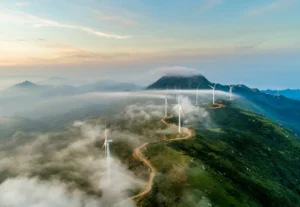Key Impact Points:
- The first week of COP29 highlighted major frustration over the stalled discussions on climate finance for developing countries.
- The NCQG agreement draft has grown to 25 pages with hundreds of unresolved clauses, reflecting the complexity of reaching consensus.
- Developing countries, represented by the LMDCs, issued strong demands for clear financial commitments, emphasizing their need for at least $1 trillion annually.
Progress and Setbacks
The COP29 summit in Baku started with initial success, as the Azerbaijani presidency celebrated an agreement on a global system of carbon credits. However, progress halted soon after. “The pace of negotiations in week one reminds me how climate COPs felt before the Paris Agreement reinvigorated these UN talks,” said Clare Shakya, global climate chief at The Nature Conservancy. This reference to the pre-2015 struggle highlights the concerns surrounding the current impasse.
Financing Focus: The NCQG
The primary issue at COP29 is the New Collective Quantitative Goal (NCQG), a crucial topic that has earned the summit the nickname ‘finance COP.’ The NCQG aims to significantly increase the $100 billion annual goal set in 2009, which was only reached two years past its original 2020 deadline. The EU has pushed for an expanded donor base to include countries like China, which continues to identify as a developing nation.
Tensions surfaced during the first week’s closing session when Diego Pacheco, chief negotiator for Bolivia, voiced the frustrations of over 20 developing countries. “There is still only a zero in the NCQG discussions,” Pacheco declared. “No number, no ambition. Let us remember that this is a finance COP, and we expect developed countries to deliver.” This strong statement, representing nations that account for more than half the global population, underscores the high stakes.
Change the World - Subscribe Now
The Complex Path Ahead
Negotiators began COP29 with a concise nine-page draft for the NCQG, which has since expanded to 35 pages laden with unresolved terms. A revised version published at the start of the second week reduced it to 25 pages but still contains hundreds of sub-options and blanks.
Eleonora Cogo from ECCO noted a pivotal announcement on November 12 when the World Bank and other MDBs pledged to increase climate finance for low- and middle-income countries. “The MDBs have already signalled they can scale up by 2030 to 120 billion [dollars], so it’s a very big step forward from the 75bn that we had,” Cogo remarked. “I think it’s a very encouraging signal because, if they can do it, all of a sudden it makes the bigger core goal less scary.”
What’s Next?
As the summit enters its final week, ministers are arriving in Baku for high-level discussions aimed at solidifying a compromise before the November 22 deadline. With stakes high and the possibility of overtime looming, the outcome will shape the trajectory of global climate finance for years to come.
Related Article: COP29: Environment Takes Centre Stage












